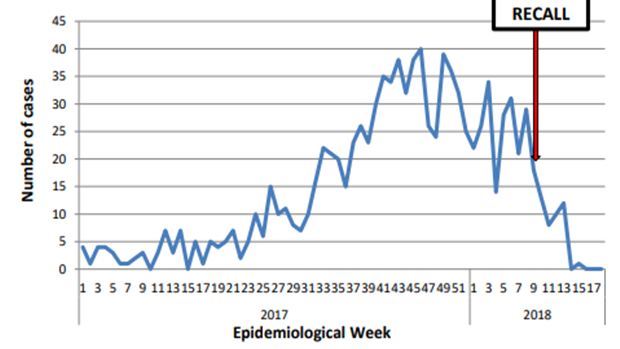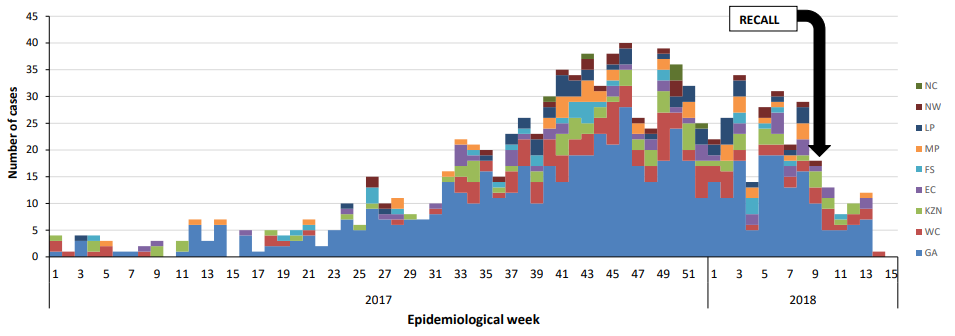Since the national government announced a Listeriosis outbreak in December 2017, extensive research has revealed that the total number of patients diagnosed with Listeriosis since 1 January 2017 stands at 1 011 (as of 9 April 2018).
Statistics released by the National Institute for Communicable Diseases (NICD) show that babies younger than 28 days are most affected. But recent data reveals a surprising group, second in line to contract Listeriosis: 15- to 49-year-olds.
A total of 81 deaths in neonates under 28 days old have been confirmed; 10 deaths in children aged one month to 14 years old; and close to 50 deaths in 15- to 49-year-olds. 
The figure above shows age distribution and outcome of laboratory-confirmed Listeriosis cases from 1 January to 9 April 2018. (n=1011)
Health24 spoke to Dr Juno Thomas, the Head of the Centre for Enteric Diseases at the NICD, about the severity of the situation. She asserted that while the death toll has risen, it is important to look at the cases as they continue to decline: from 90 cases to 40 cases a week.
She also explained that Listeria affects people with weaker immune systems, making babies and the elderly more vulnerable to the illness. According to Dr Thomas, pregnant women with Listeriosis pass the illness on to the baby through the placenta, "hence the severity in the baby".
Regarding the second highest group, Dr Thomas attributes this to two factors. "Firstly, women in that group are of childbearing age, and secondly this age group has the highest statistics for HIV, making them a risk factor."
According to the NICD, the reasons for new cases being reported are that the incubation period of Listeriosis can be up to 70 days, as well as the implicated food products having a long refrigeration shelf life. It is also possible that while there has been a recall, some products were not removed from both home and retail settings, making the possibility of cross-contamination a reality.
In the situational reports released by the NICD, it seems important for them to present the statistics through province distribution as well. According to Dr Thomas, this is because "we noticed that there was a distinct provincial distribution... It is important to monitor any changing trends, to see if we are missing anything. So we divided the statistics up by province to follow trends and keep track of patterns."
Image credits: iStock, NICD
*All data supplied by the National Institute for Communicable Diseases.




 Publications
Publications
 Partners
Partners
















